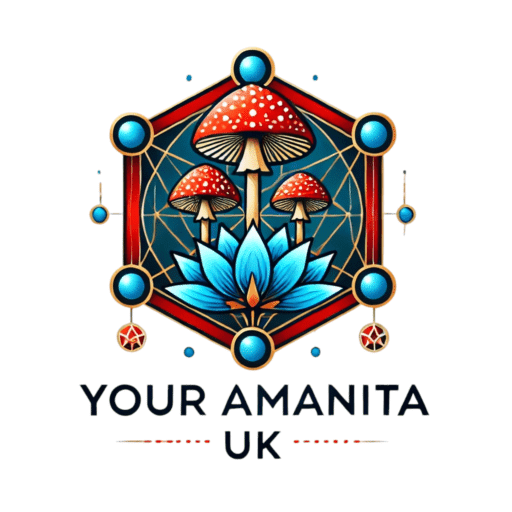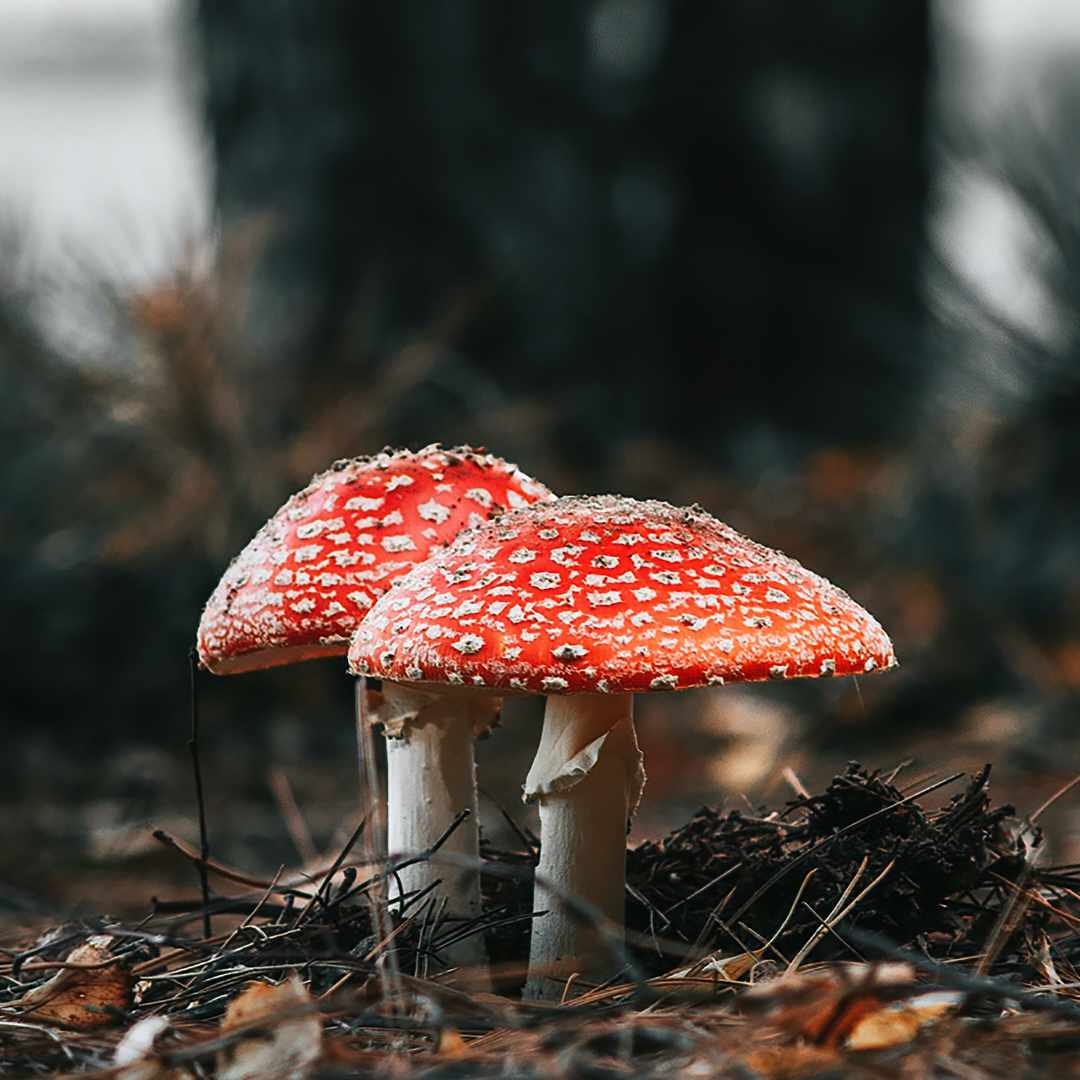
What Is Amanita Muscaria?
Amanita Muscaria, Commonly known as the fly Agaric mushroom or Agaric Fly is a striking iconic mushroom recognised worldwide for its vibrant red cap adorned with white spots. Found in temperate and boreal forests, this fungi thrives in symbolic relationships with trees like birch, pine and spruce. While admired for its beauty, Amanita Muscaria is known for its psychoactive properties, attributed toto compounds like ibotenic acid and muscimol.
What Does Fly Agaric Fungus Look Like?
Fly agaric has a bright red cap with white spots and white gills. It can grow to 20cm across and 30cm tall and has a savoury smell.
Not to be confused with:
the blusher (Amanita rubescens), which is of similar shape, with a pale, reddish-brown cap and cream spots.
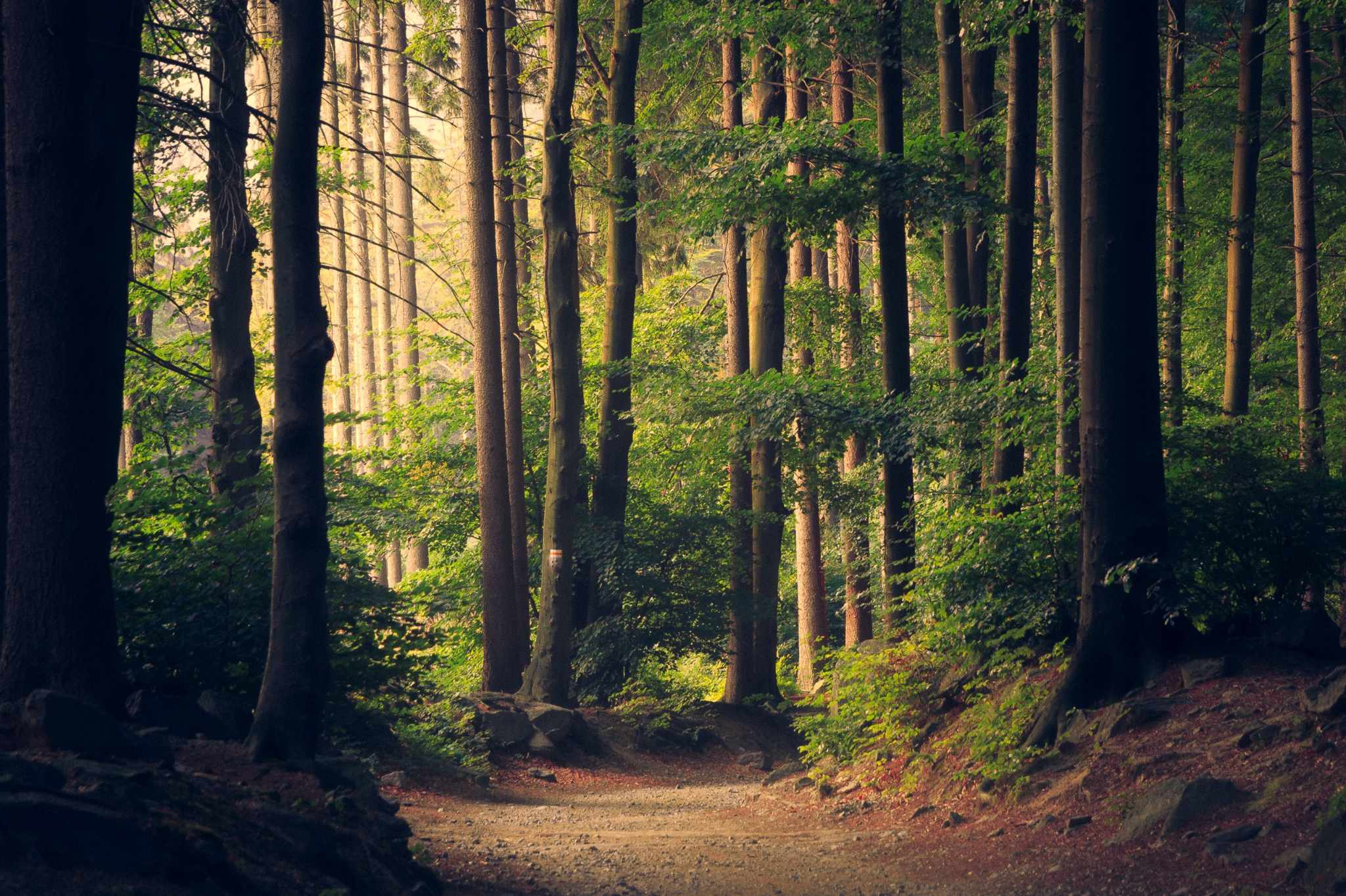
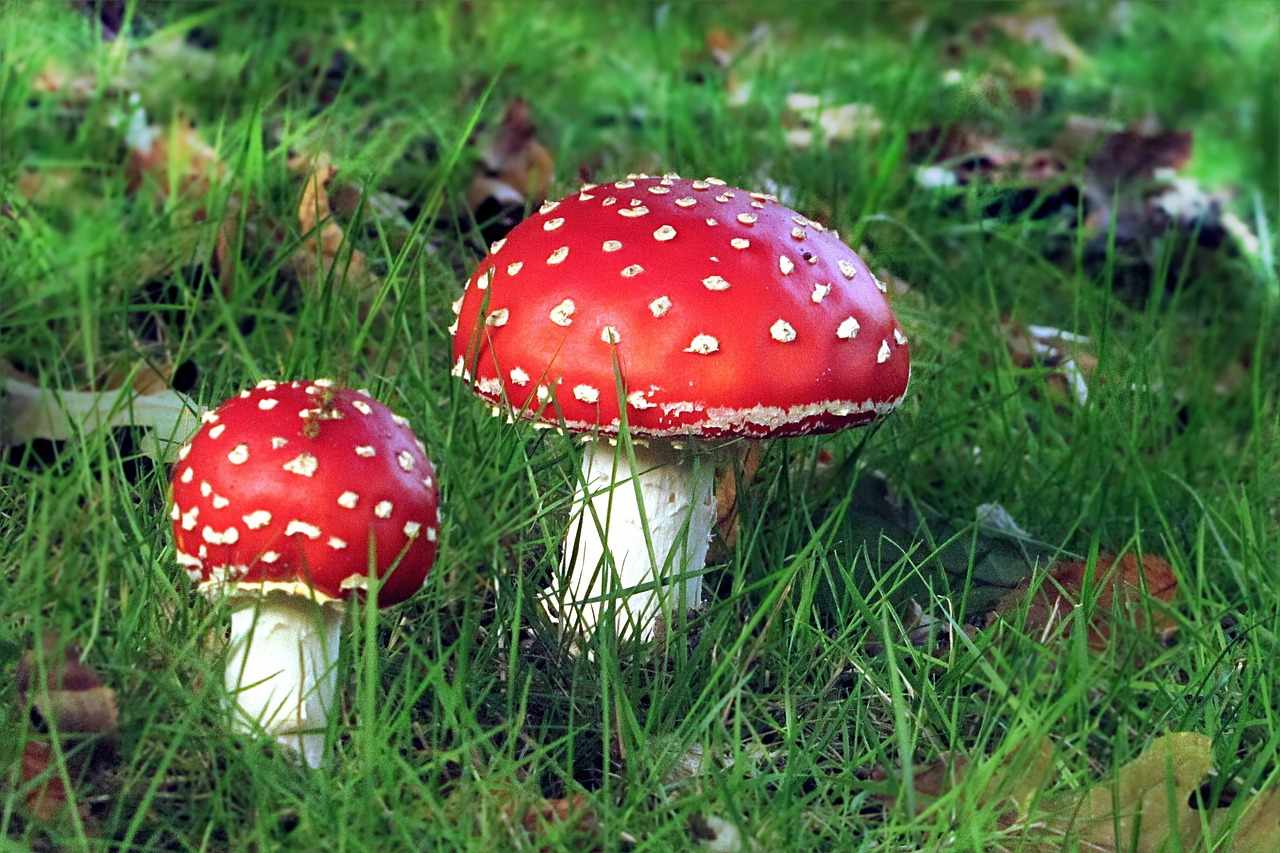
Where Does Amanita Grow?
Amanita muscaria, the fly agaric mushroom, typically grows in specific environmental conditions. Here are some key characteristics of its habitat:
1. *Forest Ecosystems:* Fly agaric mushrooms are often found in both coniferous and deciduous forests. They prefer damp, wooded areas.
2. *Tree Associations:* They frequently grow near certain tree species, such as birch, pine, and spruce. You can often find them near the base of these trees.
3. *Mycorrhizal Symbiosis:* Amanita muscaria forms a mycorrhizal relationship with the roots of trees. This means it exchanges nutrients with the trees in a mutually beneficial manner.
4. *Cooler Temperatures:* They tend to appear in cooler, temperate regions, usually in late summer to early autumn.
5. *Moisture:* Adequate moisture in the soil is essential for their growth. They often pop up after rainfall.
Remember, while Amanita muscaria is not always deadly, it is considered toxic and can have hallucinogenic effects. Therefore, if you're not an experienced mycologist, it's best to avoid consuming or handling wild mushrooms to prevent accidental poisoning.

AMANITA MUSCARIA MYTHOLOGY AND SYMBOLISM
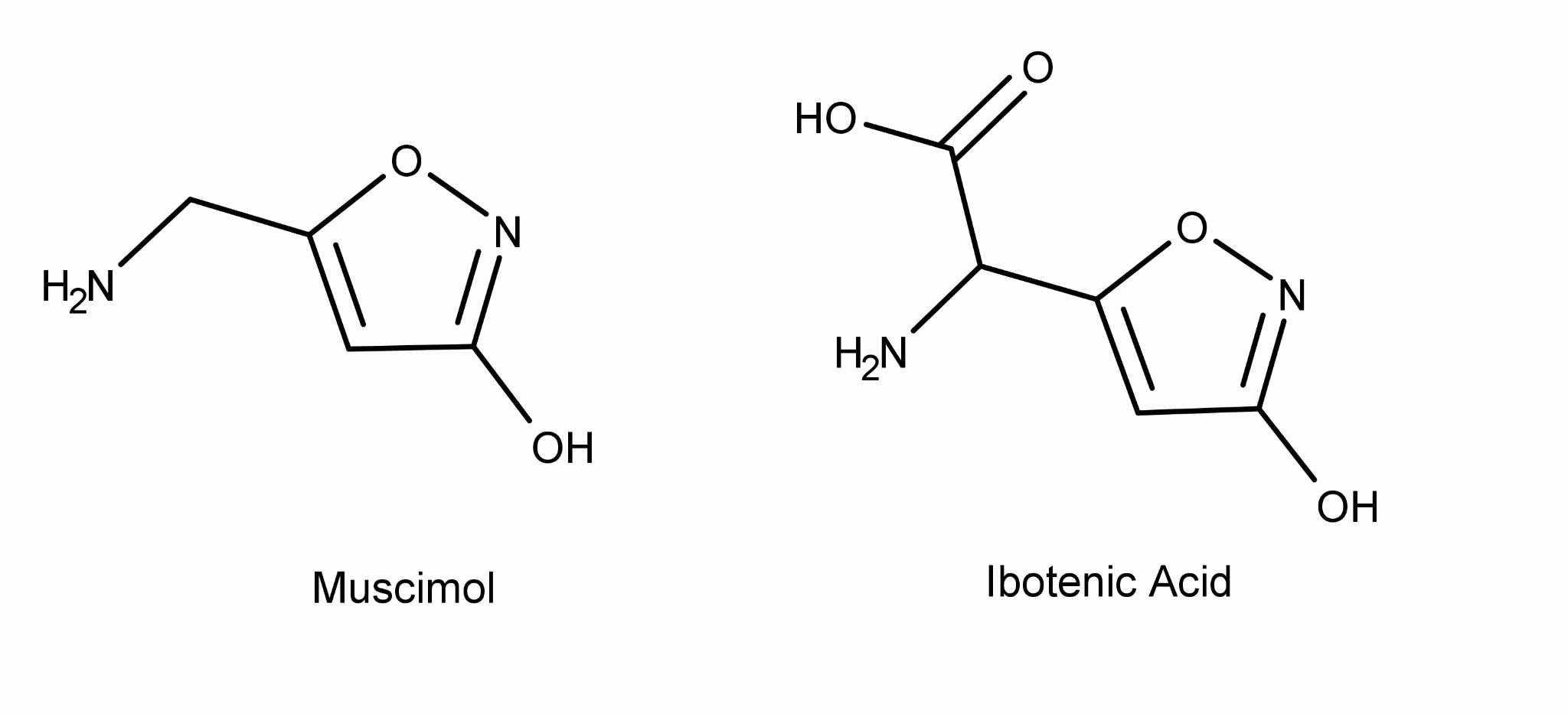
What is Ibotenic acid and muscimol?
*Ibotenic Acid*
- *Chemical Composition*: Ibotenic acid is a naturally occurring chemical compound belonging to the class of isoxazoles.
- *Natural Source*: It is primarily found in certain species of mushrooms, notably in the Amanita genus, such as Amanita muscaria.
- *Prodrug*: Ibotenic acid is considered a prodrug because when ingested, it is converted into another compound called muscimol within the body.
- *Psychoactive Effects*: Ibotenic acid itself has limited psychoactive effects, but its conversion into muscimol is responsible for the hallucinogenic properties associated with Amanita mushrooms.
- *Toxicity*: Ibotenic acid can also be toxic and can lead to adverse reactions if consumed in large quantities.
*Muscimol*
- *Chemical Composition*: Muscimol is a psychoactive compound derived from ibotenic acid. It is classified as a GABA receptor agonist.
- *Psychoactive Effects*: Muscimol is responsible for the psychoactive effects of Amanita mushrooms. These effects include hallucinations, altered perception, and changes in consciousness.
- *Mode of Action*: Muscimol primarily acts on GABA-A receptors in the central nervous system, leading to its sedative and hallucinogenic properties.
- *Duration of Effects*: The effects of muscimol can vary in duration, typically lasting for several hours, but the onset and duration can depend on factors like dosage and individual sensitivity.
- *Safety Concerns*: Amanita mushrooms and muscimol are associated with unpredictable and potentially harmful experiences. Consumption should be approached with extreme caution, as overdose or adverse reactions can occur.
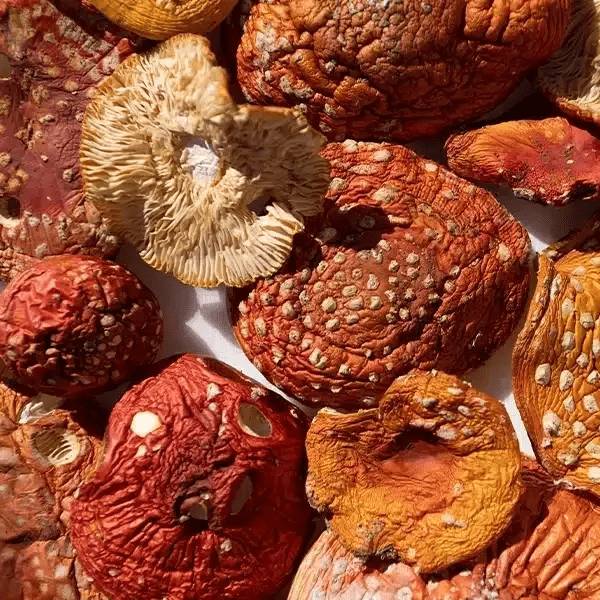
HOW TO STORE AMANITA MUSCARIA?
Storing Amanita muscaria mushrooms or any wild mushrooms can be potentially dangerous, as some species can be toxic and cause adverse reactions if consumed. Therefore, it is generally not recommended to store or use wild mushrooms for consumption unless you are an experienced mycologist and can accurately identify safe species. That said, if you have a legitimate reason to store Amanita muscaria specimens for scientific or educational purposes, follow these guidelines:
1. *Drying*: To preserve Amanita muscaria mushrooms, the most common method is to dry them. Proper drying can help prevent spoilage and degradation of the mushrooms. - Lay the mushrooms on a clean, well-ventilated surface. It's advisable to use a food dehydrator or a low-temperature oven (around 120°F or 50°C) to speed up the drying process. - Allow the mushrooms to dry until they are crisp and no moisture remains. This may take a few days to a week, depending on the size and moisture content of the mushrooms. - Store the dried mushrooms in an airtight container in a cool, dark place. You can also use vacuum-sealed bags to further prevent moisture and air exposure.
2. *Labeling*: Clearly label the container with the name of the mushroom species, date of collection, and any other relevant information.
3. *Safety Precautions*: When handling wild mushrooms, always wear gloves and take precautions to avoid contamination. Wash your hands thoroughly after handling them, as some toxic compounds can be absorbed through the skin.
4. *Record Keeping*: Keep detailed records of where and when the mushrooms were collected, as well as any environmental conditions or characteristics that can aid in their identification.
*Disclaimer:*
Our Amanita products are, strictly not for human consumption. It is intended for purposes other than ingestion and should never be used as a food, dietary supplement, medication, or any form of human consumption. Please read and understand the following important points:
1. *Product Intended Use:*
This product is designed, manufactured, and sold solely for purposes other than consumption by humans. It may have various applications, such as research, decoration, educational purposes, or other non-ingestible uses.
2. *Safety Considerations:*
Ingesting, inhaling, or using this product in any way that involves human consumption can pose serious health risks, including but not limited to poisoning, allergic reactions, adverse side effects, or other harmful consequences.
3. *Legal Compliance:*
The use of this product must comply with all applicable local, state, and federal laws and regulations. It is the responsibility of the user to ensure they are aware of and adhere to all legal restrictions related to the use and possession of this product.
4. *Educational and Informational Resources:*
If you are seeking information or materials for human consumption, consult appropriate professionals or sources qualified to provide guidance and advice regarding such matters. Do not use this product as a substitute for appropriate resources.
5. *Liability Release:*
By purchasing, possessing, or using this product, you acknowledge and accept that the manufacturer, seller, and distributors are not liable for any misuse, harm, or consequences resulting from improper use or consumption of this product.
6. *Keep Out of Reach of Children and Pets:*
Store this product in a secure and inaccessible location to prevent accidental ingestion or exposure to children, pets, or any unintended individuals. In summary, it is of utmost importance to recognize that this product is not intended for human consumption in any form. Any use other than its intended purpose is strongly discouraged and may result in serious health risks and legal consequences. Please exercise caution, responsibility, and compliance with all applicable laws and regulations when dealing with this product.
